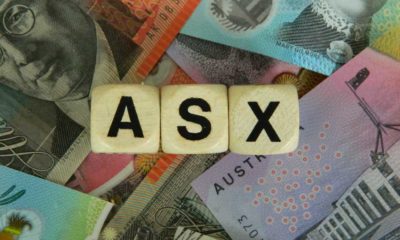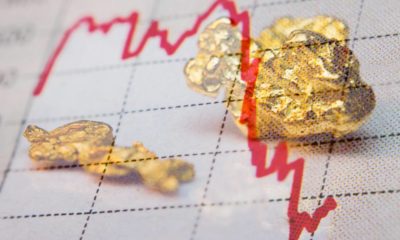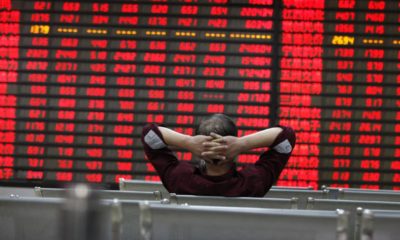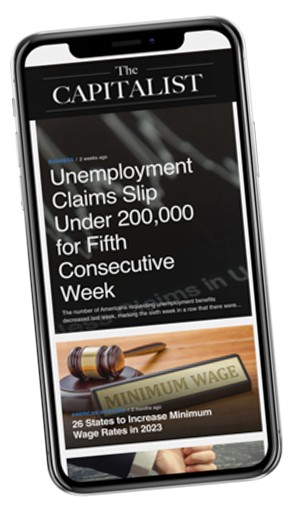Commodities
Are Gold Prices Really Difficult to Predict?
Although it’s been said that people turn to gold in times of uncertainty, this doesn’t always hold true.

Although it's been said that people turn to gold in times of uncertainty, this doesn't always hold true.
“Sometimes that works, sometimes it doesn’t. Gold did phenomenally well from 2000-2011 but really suffered after hitting nearly $2000 per ounce in 2011. From 2011 to 2015, the yellow metal pretty much fell in a straight line amid the European financial crisis,” stated Aaron Task in his Fortune article, “Why gold has been on a tear in 2016.”
Getting a Hold on Gold
Kenneth Rogoff — in his 2010 paper “Ten-Thousand Dollar Gold?” — asserted out that “gold and reason are difficult to reconcile.” He pointed out, “Most economic research suggests that gold prices are very difficult to predict over the short to medium term, with the odds of gains and losses being roughly in balance. It is therefore dangerous to extrapolate from short-term trends.”
Historically, there are several factors that influence the price of gold. Analysts use these factors to make their projections: supply and demand, dollar strength, and central bank movements.
Gold has a great buying opportunity. Previous resistance becoming support –> https://t.co/kEN0bzNh7S pic.twitter.com/9iDPxBPC1Z
— The Capitalist (@Capitalist_Site) May 4, 2016
Supply, Demand, and Dollar Strength
Task wrote, “What ultimately drives gold is the dollar – which went on a tear in the second half of 2015 amid expectations the Fed would start raising rates aggressively while other global central banks have been easing.”
He added that “recent market volatility and weak U.S. economic data have caused some people to speculate the Fed might have to go to negative interest rates.” This has happened in Denmark, Switzerland, Japan, and the European Central Bank.
That said, Task continued, “In a nutshell, negative rates mean people and institutions are paying the banks to hold their cash, or paying governments to invest in their bonds. Rationally speaking, if it’s costing you money to keep cash in the bank, why not invest in something like gold that has an opportunity to provide a return on investment?”
The rise in demand for gold would, of course, drive up prices, especially since the world’s gold producers have cut back on their exploration budgets since 2011.
There are, of course, some experts who dare to predict gold's future, even if they don't necessarily quote prices.
In a July 2015 interview with CNBC, Sandy Jadeja, chief market strategist at Signal Pro, stated that he expected to see more short-term bad news for gold. However, he said that 2017 would be the year where he would go back to focusing on the bullion.
[seabridge]
He explained, “My view is that the equity markets will have really exhausted themselves (in 2017).”
Jadeja went on to say, “I would expect the equity markets to come off (in 2017), people coming back (to gold) from a sentiment point of view, thinking, ‘Maybe gold prices are so low right now maybe it's time to go back in and hedge on equities.'”
Central Bank Movements
In an interview on CNBC's Fast Money, commodities expert Dennis Gartman, editor of The Gartman Letter, said that gold is still in a bull market. He then predicted that gold “could finish out the year 10 to 15 percent above current levels.”
“With gold (CEC:Commodities Exchange Centre: @GC.1) hitting a 15-month high on May 2 and breaching $1,300, that would represent a price as high as nearly $1,500,” reported CNBC's Stephanie Landsman.
Gartman based his prediction on central bank policies. “I think the monetary authorities around the world, with the exception of the United States, are continuing to err on the side of easier monetary policies,” he explained.
Landsman noted: “Easy monetary policies tend to make a country's currency less valuable, potentially leading investors to turn to gold as a store of value. In addition, the low interest rates engendered by these policies make the yellow metal relatively more attractive, since it means investors aren't missing out on much by holding a non-yielding asset.”
Price Predictions
Gold Stock Bull went as far as to quote specific figures for their long-term prediction. However, they issued this disclaimer: “The following represent our current short-term, medium-term and long-term gold price forecasts. Please note that short-term gold price forecasts are very unreliable in a market that is as managed and manipulated as the precious metals market. But this helps to give our readers some idea of what we expect the gold price to do in the coming months and years.”
2016 Gold Price Forecast: $1,550
2017 Gold Price Forecast: $2,400
2018 Gold Price Forecast: $3,200
2019 Gold Price Forecast: $4,000
2020 Gold Price Forecast: $5,000+
Then again, it must be said that one should not take these numbers at face value.
In the article, “The Future of Investing in Gold,” Terry Lane cautioned, “While gold tends to hold its value over time, its price growth is tied to interest rates, economic conditions and inflation. When the economy is growing, gold can lose value as investors look for investments such as stocks that may produce bigger returns.”
Rogoff likewise asserted, “If you are a high-net-worth investor, a sovereign wealth fund, or a central bank, it makes perfect sense to hold a modest proportion of your portfolio in gold as a hedge against extreme events. But despite gold’s heightened allure in the wake of an extraordinary run-up in its price, it remains a very risky bet for most of us.”















